HandmadePictures/iStock/GettyImages
Cutting up ingredients is one of the most fundamental cooking skills, and there are many options aside from simply chopping or dicing. One that's especially elegant is the julienne cut, which turns fruits or vegetables into matchstick-shaped pieces. It's difficult to julienne fresh basil and other leafy greens, but there is a well-established technique you can use.
It's Not Really Julienne
Like most cooking terms derived from the French culinary heritage, "julienne" has a very specific meaning. It refers to rectangular cuts about 3 inches long and 1/8 to 1/16 inch square. Clearly that's not something you can do with flat leaves, so no French chef would speak of julienned fresh basil. Instead there's a related term, "chiffonade," which, like julienne, refers both to the technique and the finished product.
Introduction to Chiffonade
As you'll guess if you've ever worked with the fabric called chiffon or eaten a chiffon cake or chiffon pie, this indicates that the basil will be light and airy. In this case, it takes the form of fine, delicate shreds. They're suitable for sprinkling over pizzas or pasta dishes as a garnish, or they can be added to sauces or hot dishes where they'll quickly cook down and release their flavor.
The Technique
The chiffonade technique is surprisingly simple to learn. Aside from the basil leaves themselves, all you'll need is a cutting board and a reasonably sharp knife. Your knife should have a smooth blade, rather than a serrated edge, because a serrated blade will tear the leaves instead of cutting them cleanly.
- Pluck a small mound of fresh basil leaves from their stems.
- Stack them on your cutting board with the broadest leaves at the bottom and thinner leaves on top.
- Roll the stack of leaves tightly into a cylinder, like a small green cigar. Pinch the cylinder against the cutting board, to hold it together.
- Position your knife across the end of the cylinder of leaves and slice, using a rocking motion, to make fine shreds.
- Toss the shreds lightly after you've sliced the whole cylinder of fresh basil.
Using Your New Skill
Learning to chiffonade neatly takes practice, like any other skill, but even novices can make attractive shreds of basil on the first attempt. Of course, basil is not the only ingredient that can be prepared this way. Spinach and other cooked greens can be sliced chiffonade-style for quicker cooking and convenient eating, whether they're steamed or stir-fried. Lettuce and other salad greens work well with this technique, and a bed of shredded greenery makes for in interestingly different salad. Any other herbs with broad, flat leaves, such as sage and Italian parsley, can also be shredded in the same way.
Related Articles

How to Cook Chard
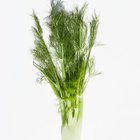
How to Julienne Fennel
Substitutes for Frisee Lettuce

How to Crush Mint

How to Crush Basil

How to Freeze & Store Purslane
Can You Eat Chicory Raw?

How to Eat Kohlrabi
How to Julienne Mint
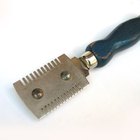
How to Twist & Cut Hair

How to Steam Cabbage on the Stove

Easy Way to Destring Celery

How to Chop Chayote
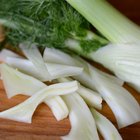
How to Eat Fennel Raw
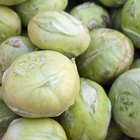
How to Cut Turnips
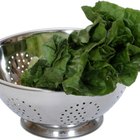
How to Cook Leaf Spinach

What Is French Terry Cloth?

Boiled Cabbage as a Noodle Substitute

Bulgur Wheat Calories

Cooking Kale Greens
References
Tips
- Store basil near 55 degrees Fahrenheit so it doesn't turn black from cold damage. Basil has a short shelf life of one to three days.
Writer Bio
Fred Decker is a trained chef and prolific freelance writer. In previous careers, he sold insurance and mutual funds, and was a longtime retailer. He was educated at Memorial University of Newfoundland and the Northern Alberta Institute of Technology. His articles have appeared on numerous home and garden sites including GoneOutdoors, TheNest and eHow.